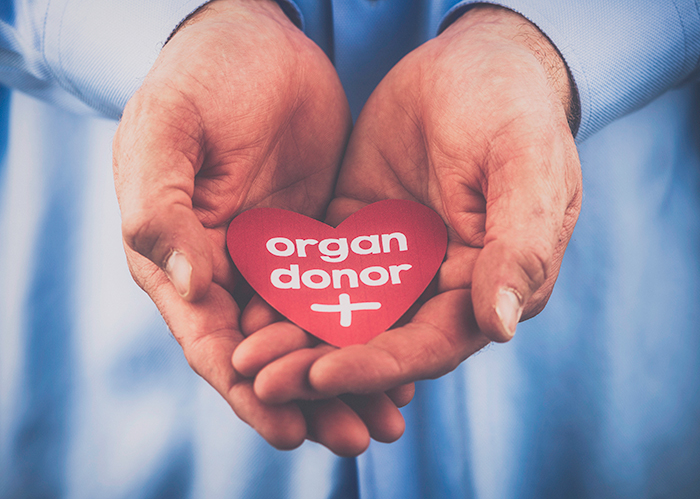Be a Superhero: Become an Organ Donor

We all want to make a difference and leave this world a better place when we are no longer here. One way we can do that is to become an organ, tissue, and eye donor and give the gift of life to someone — or several someones — who could die without it.
“Organ donor heroes set the unparalleled standards for the generosity of mankind, for in their final hour they donate a lifetime,” says Dr. Sam Salama, executive director of the Life Alliance Organ Recovery Agency and a surgical critical care specialist at the University of Miami Health System.
The selfless decision made by these heroes and their families save the lives of many through organ donations, enhance the lives of many more through eye and tissue donation, and contribute to the advancement of science through brain donation.
Dr. Sam Salama
According to the United Network for Organ Sharing, the nation’s organ transplant network:
- Every 10 minutes another name is added to the national organ transplant waiting list.
- Currently, 114,880 men, women, and children are awaiting organ transplants in the United States.
- One organ donor can save up to eight lives.
- On average, 20 people die each day because the organs they need are not donated in time.
Deciding to become a donor
There are certain organs you can donate while you are alive and others that would become available upon death. No one takes this decision lightly, and there are some things you should know about what it means:
- Anyone can become an organ, tissue, and eye donor, no matter how old you are.
- All major religions approve of organ and tissue donation and consider it an act of charity.
- Many organs and tissues can be donated, including heart, kidneys, lungs, pancreas, liver, intestines, corneas, skin, tendons, bone, and heart valves, and even the brain.
- Even if you have indicated your wishes on your drivers’ license or in a national or state registry, be sure to tell your family so they understand your decision.
Deceased organ donation
People most frequently become donors after a stroke, heart attack or a severe head injury. Your medical condition at the time of death will determine what organs and tissue can be donated.
Skilled organ procurement and transplant teams take precise steps to make sure healthy organs get from the donors to the people who need them. There is a limited time window for a transplant to safely occur.
If you intend to be an organ donor, make sure it is on your driver’s license, that you have signed up with a national or state registry, and your family knows that is your intention.
Your blood type, height, weight, the hospital zip code and other data are entered into UNOS’ national computer system to begin the organ allocation process. Appropriate candidates are found for whom your organs are the best match. After donation, your body can be taken to a funeral home of your family’s choice, and an open casket funeral is possible if desired.
Living donation
In 2016, nearly 6,000 transplants were made possible in 2016 by living donors.
Relatives, loved ones, friends and even individuals with no prior relationship are serving as living donors for the growing number of people on the national organ transplant waiting list.
The kidney is the most commonly transplanted organ from a living donor. One entire kidney is removed and transplanted. A living liver donation, where a segment of the donor’s liver is transplanted, occurs less often, and the donor is usually related to the recipient. Also, in rare cases, a segment of organs such as lung, intestine or pancreas can be transplanted from a living donor.
Types of living donor transplants
Directed donation: In this most common type of living donation, you name the specific person to receive the transplant, like a relative or spouse, or even an unrelated person you want to help.
Non-directed donation: In this type of living donation, you may not know the specific person who gets the organ, just someone you want to help who is medically compatible with your profile.
Paired donation: Usually a paired kidney exchange, this type of donation is being done more and more. You want to donate a kidney to your sister, but you don’t have matching blood types. Jim wants to donate to his wife but has the same problem. However, you are a match for Jim’s wife and Jim is a match to your sister, so you “swap” kidneys to accomplish both your goals.
There is no time like the present to sign up for organ donation. Register as an organ, tissue, and eye donor, be someone’s miracle and donate life. To sign up for organ donation in Florida, visit Donate Life Florida.
Mary Jo Blackwood, RN, MPH, is a freelance medical and consumer health writer for UMiami Health News, based in St. Louis, MO, and Colorado who desperately believes if we can get enough Baby Boomers onboard, we can get the law of gravity repealed.
Tags: Dr. Sam Salama, kidney, live donations, liver, organ donor, transplants, UNOS
